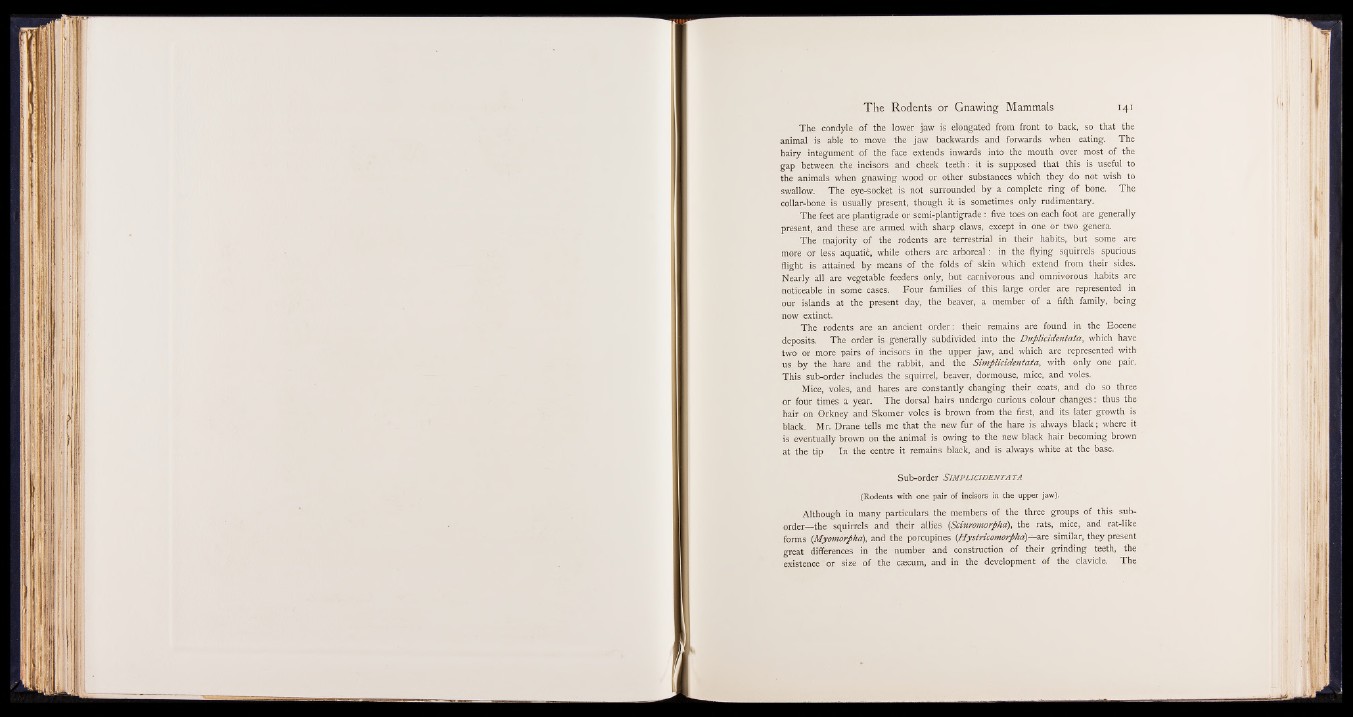
The GÔndyle of the lower jaw ^elongated from front to back, 'so that the
animal is able to move the jaw backwards and forwards when eating,: The
hairy integument of the face extends inwards into the mouth over most of the
gap between the incisors and cheek teeth: i tH supposed that this»ji| useful to
the animals when gnawing wood or other substances which they db not wish to
swallow. The eye-socket fes not surrounded by a complete ring of bone. The
collar-bone is usually present, though it is sometimes only rudimentary.
The feet are plantigrade or semi-plantigrade : five toes on each foot; are generally
present, and these are armed with sharp claws, except in one or two genera.
The majority of the rodents are terrestrial in their habits,- but B m e are
more or less aquatiè, while others are arboreal : in the: flying squirrelSspurious
flight is attained by means of the folds o f skin which extend from their sides.
Nearly all are vegetable feeders only, but carnivorous and omnivorous habits are
noticeable in some cases. Four families of this large order a r e ‘represented in
our islands at the present day, the beaver, a member of a fifth family, being
now extinct.
The rodents are an ancient order: their remains are found in the Eocene
deposits. The order is generally subdivided into the D uplicidentata, which have
two or more pairs of incisors in the upper jaw, and which are represented with
us by the hare and the rabbit, and the Sim plicidentata, with only one pair.
This sub-order includes the squirrel, beaver, dormouse, mice, and voles.
Mice, voles, and hares are constantly changing their coats, and do so three
or four times a year. The dorsal hairs undergo curious colour changes: thus the
hair on Orkney and Skomer voles is brown from the first, and its later growth is
black. Mr. Drane tells me that the new fur of the hare is always black ; where it
is eventually brown on the animal is owing to the new black hair becoming brown
at the tip In the centre it remains black, and is always white at the base.
Sub-order S im p l ic id e n t a t a
(Rodents with one pair of incisors in the upper jaw).
Although in many particulars the members of the three groups of this suborder—
the squirrels and their allies (Sciuromorpha), the rats, mice, and rat-like
forms {Myomorpha), and the porcupines {Hystricomorphd)—2XZ similar, they present
great differences in the number and construction of their grinding teeth, the
existence or size of the cæcum, and in the development of the clavicle. The